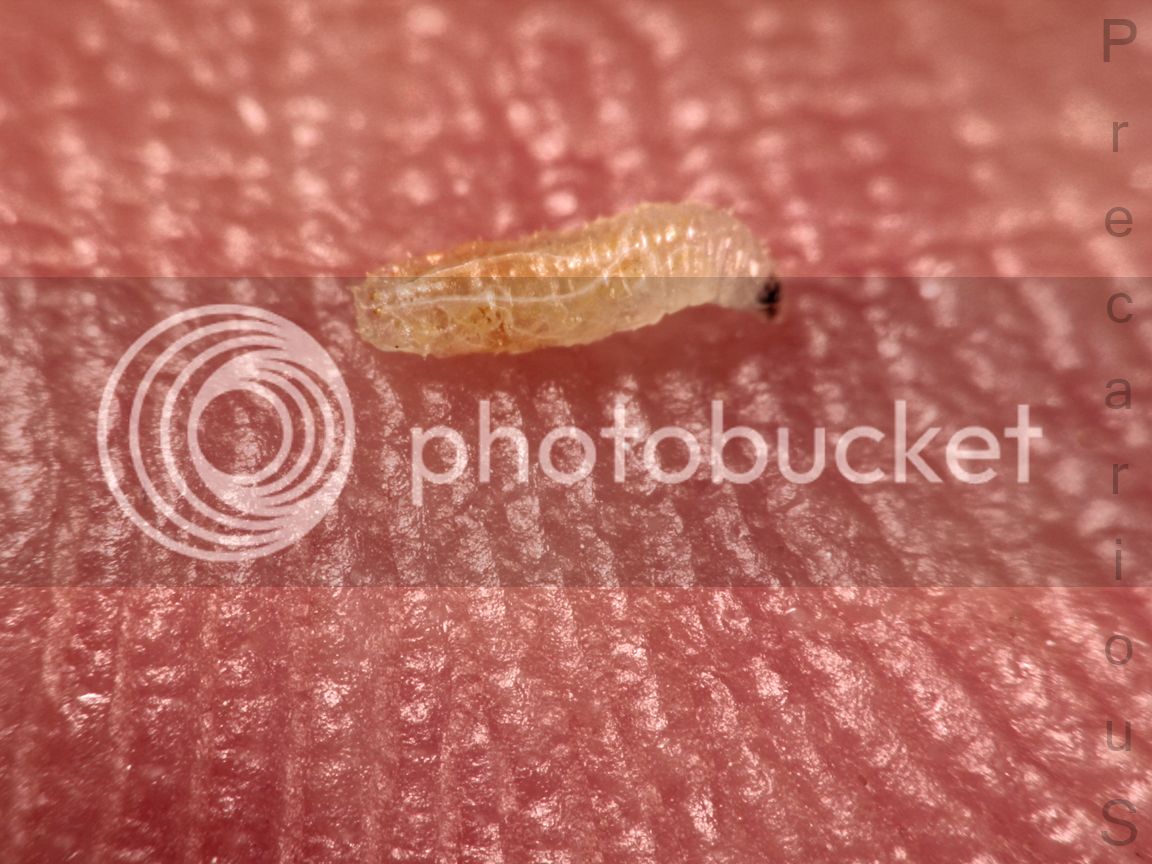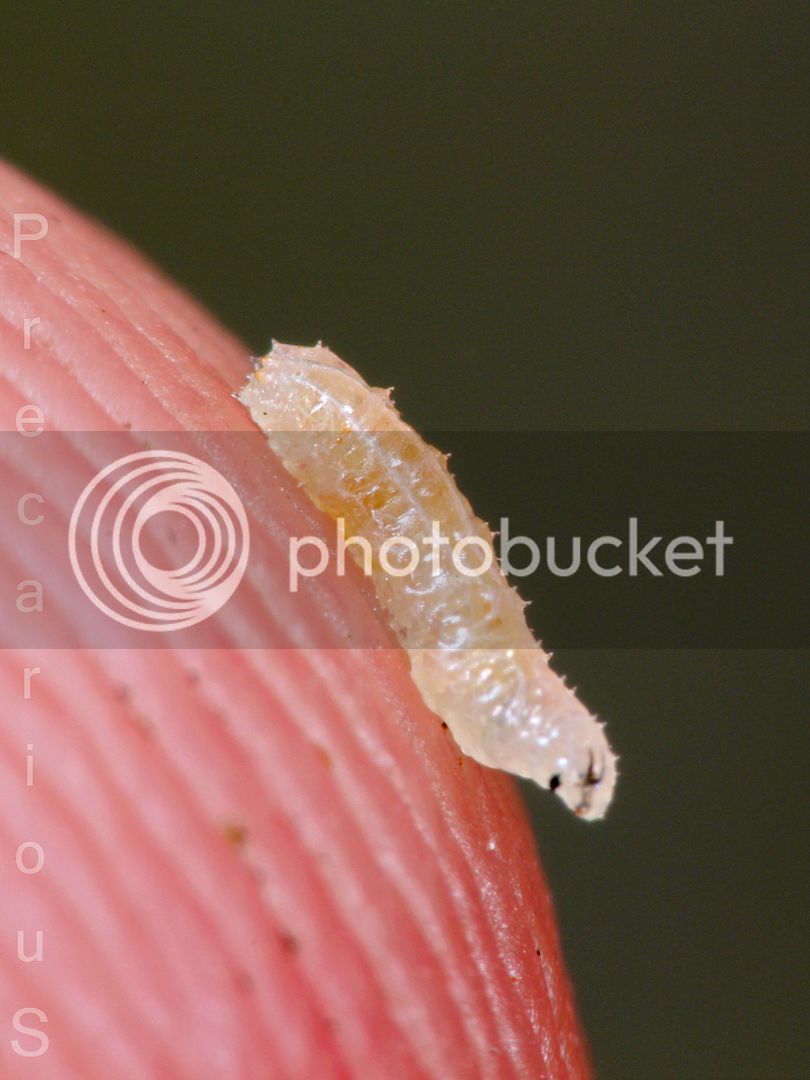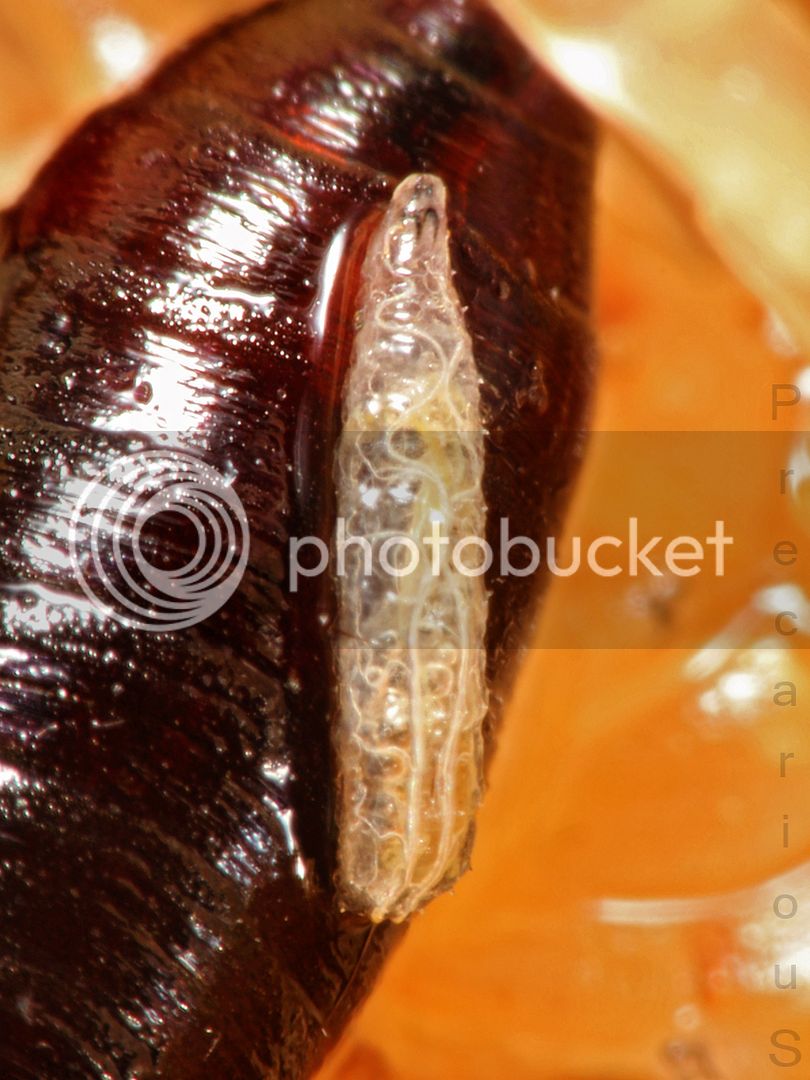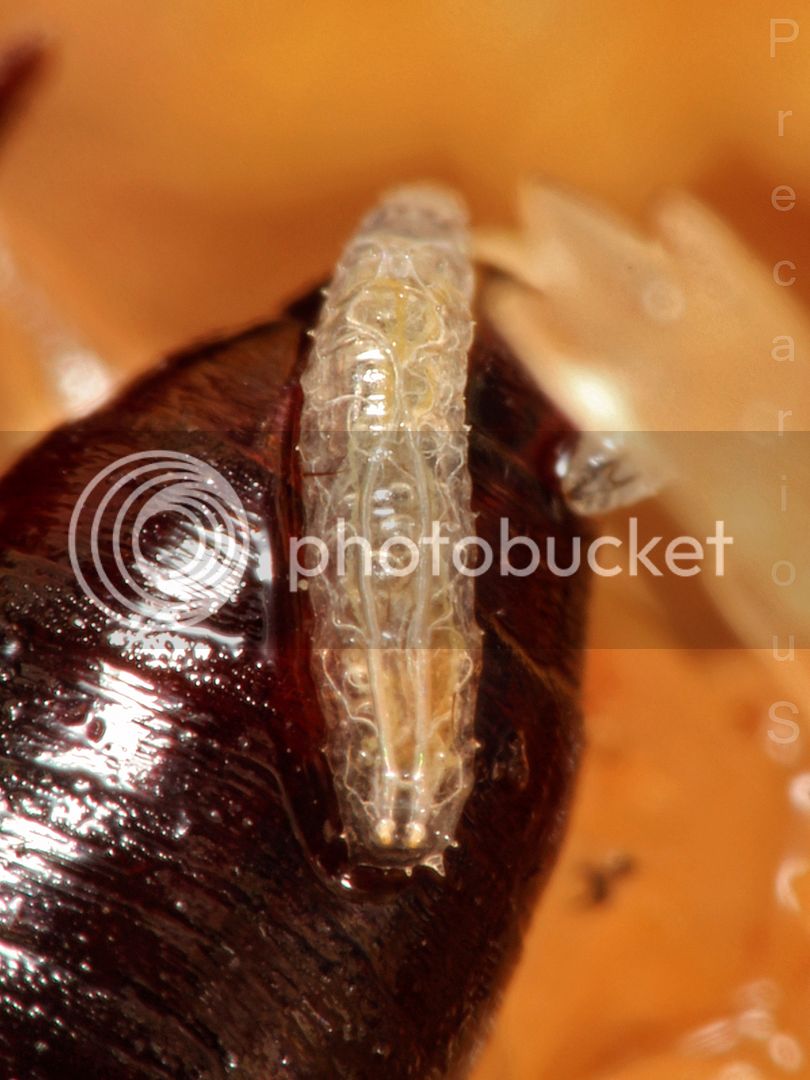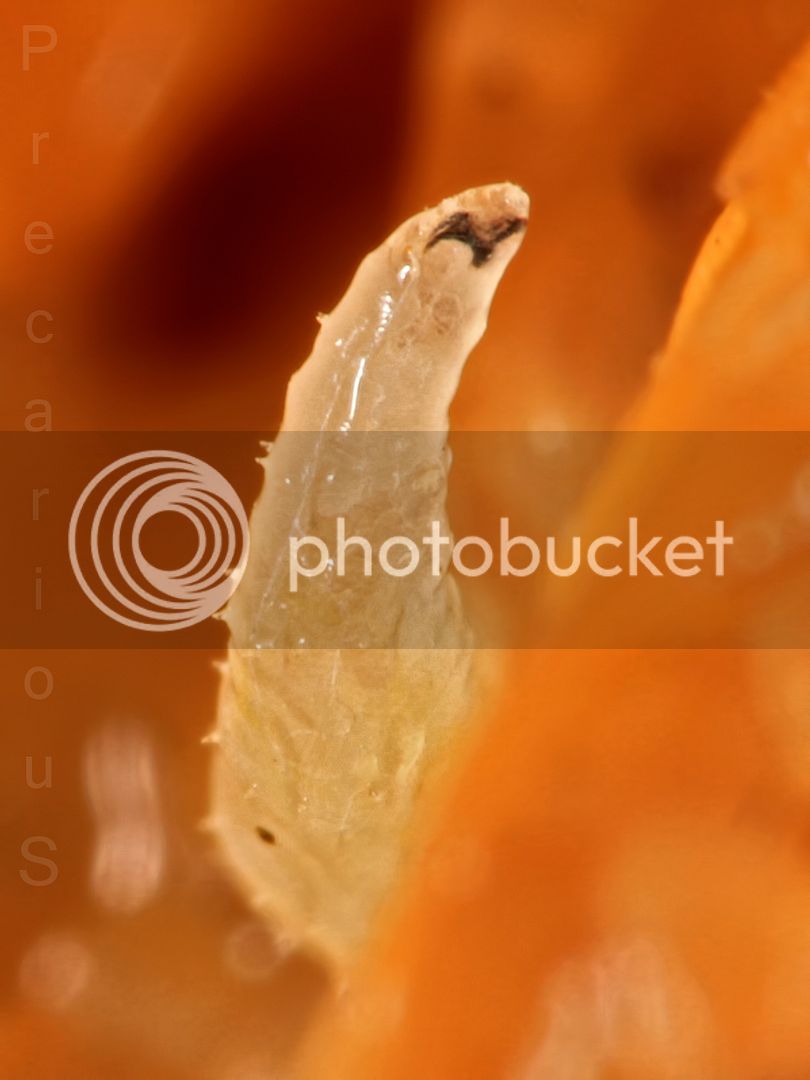Precarious
Well-known member
Music by Precarious
Peripatoides novaezelandiae
Unchanged for 570 million years, Peripatus share traits with annelids (segmented worms) and arthropods (insects, crustaceans, arachnids) yet appear much like a caterpillar. Eggs hatch inside the female and she then gives birth to the live young. Peripatoides novaezelandiae have 15 pairs of legs and grow up to 80mm (3.15").
From Wikipedia:
Peripatus feeds by trapping its prey (mostly small insects) in a white, sticky fluid it ejects from two antennae near its head. The fluid hardens on contact with the air immoblizing the prey. Peripatus then chews a hole in its prey's exoskeleton with its mandibles (which move independently of each other), injects digestive enzymes, and begins sucking out its prey's pre-digested innards.
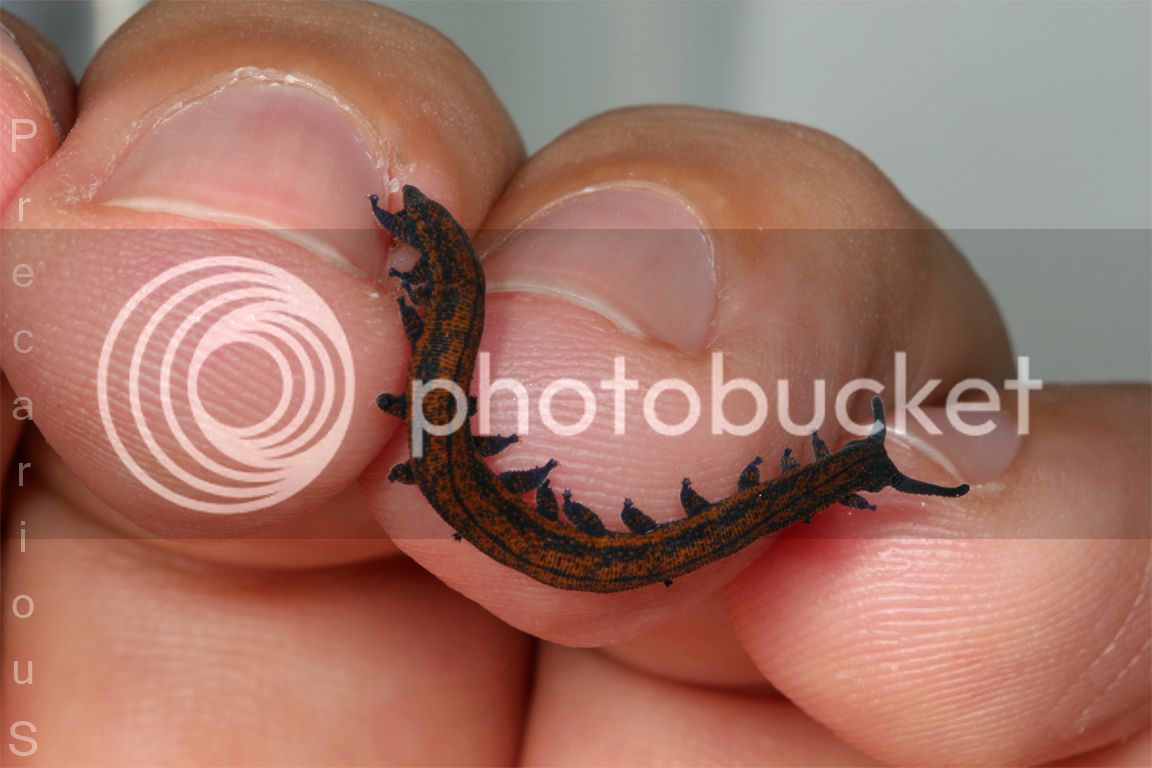
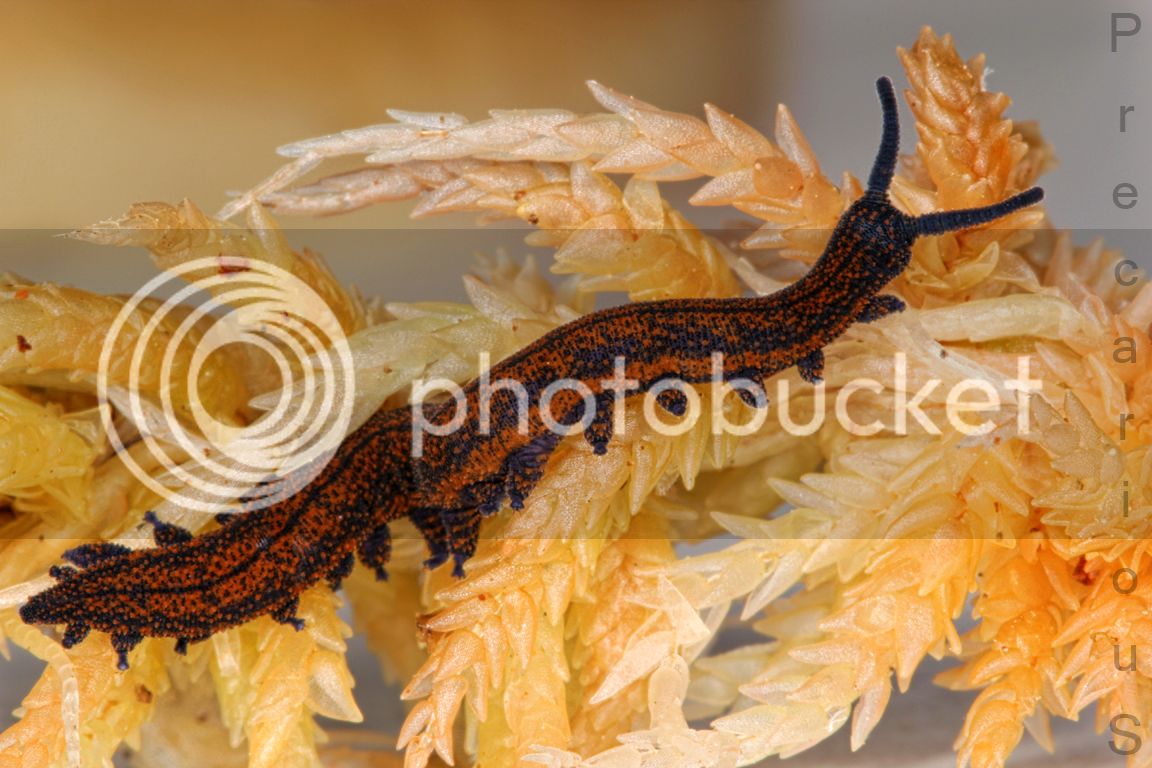
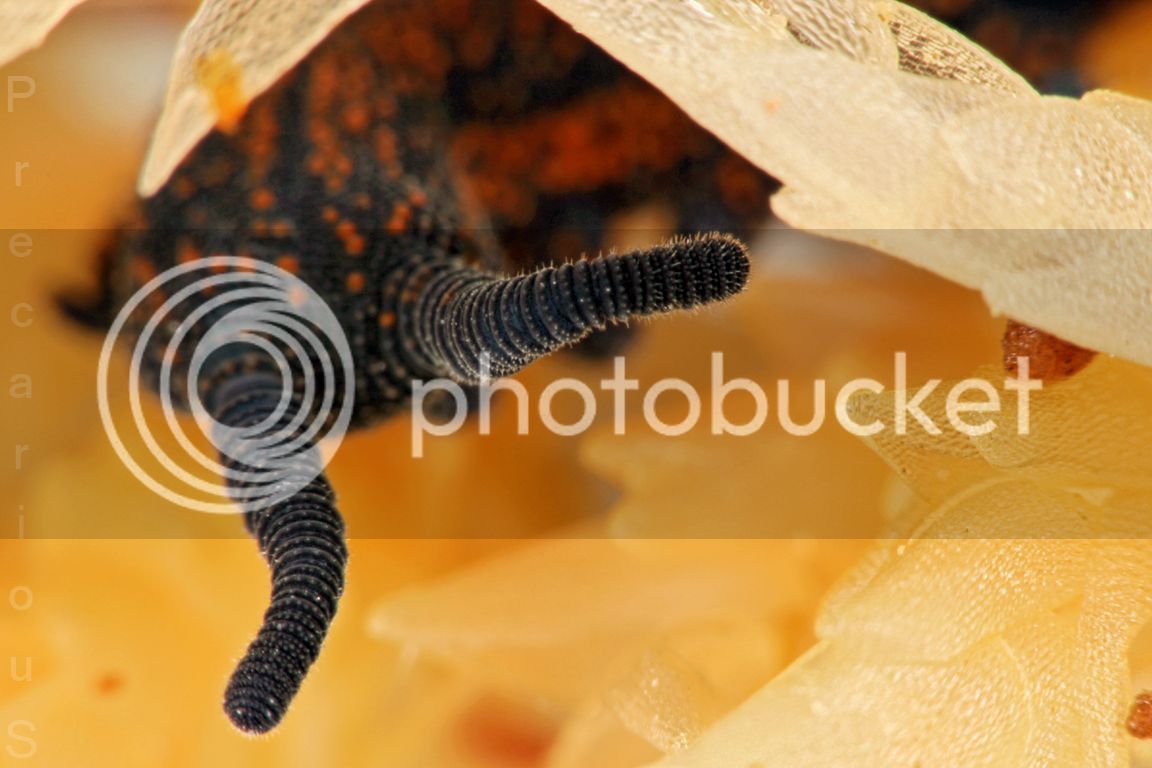
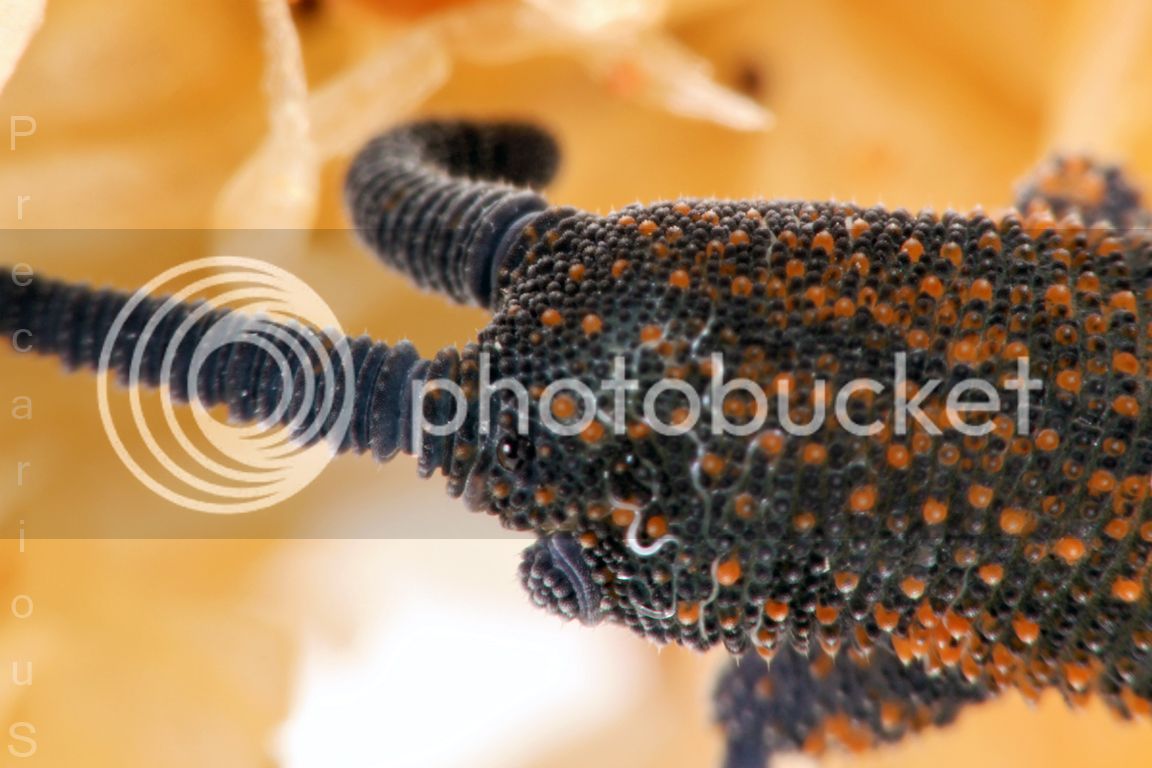
Here you can see the simple eye located at the base of the antennae with the spout that shoots slime just behind.
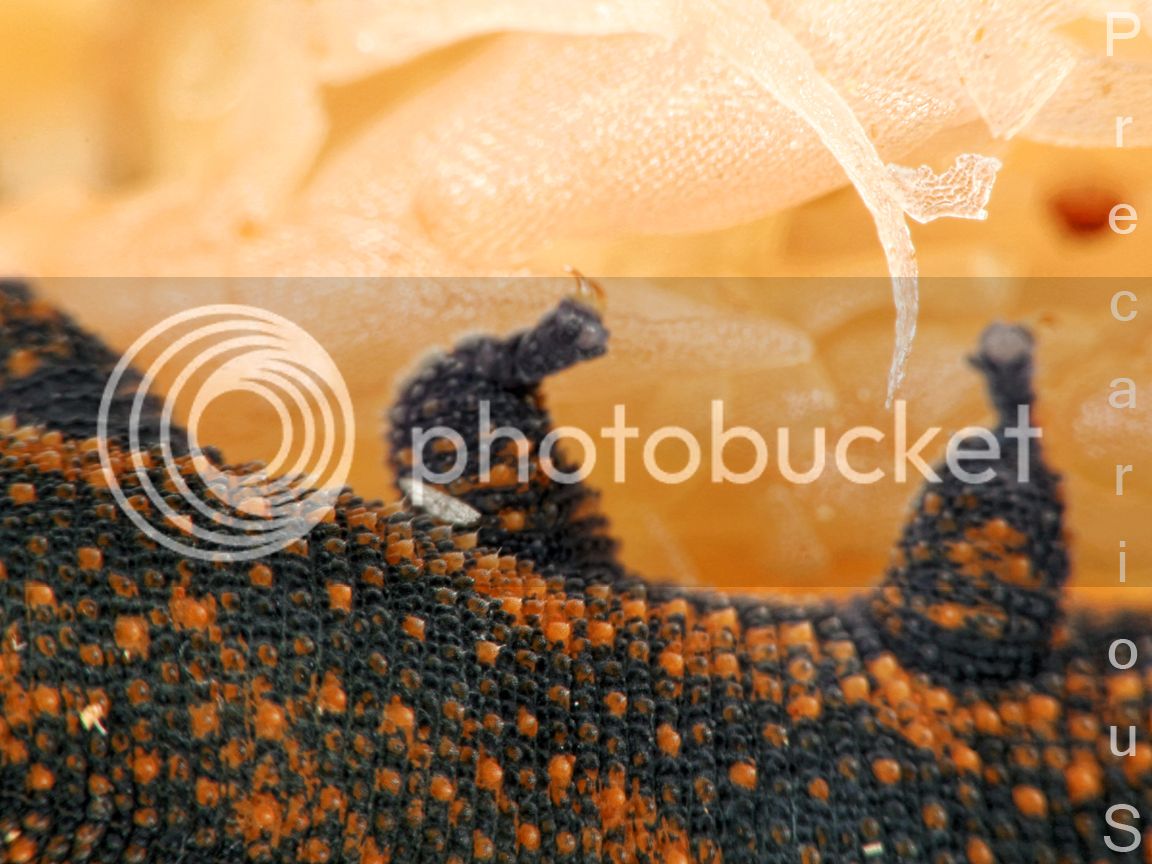
You can see the claws that come into use when necessary.
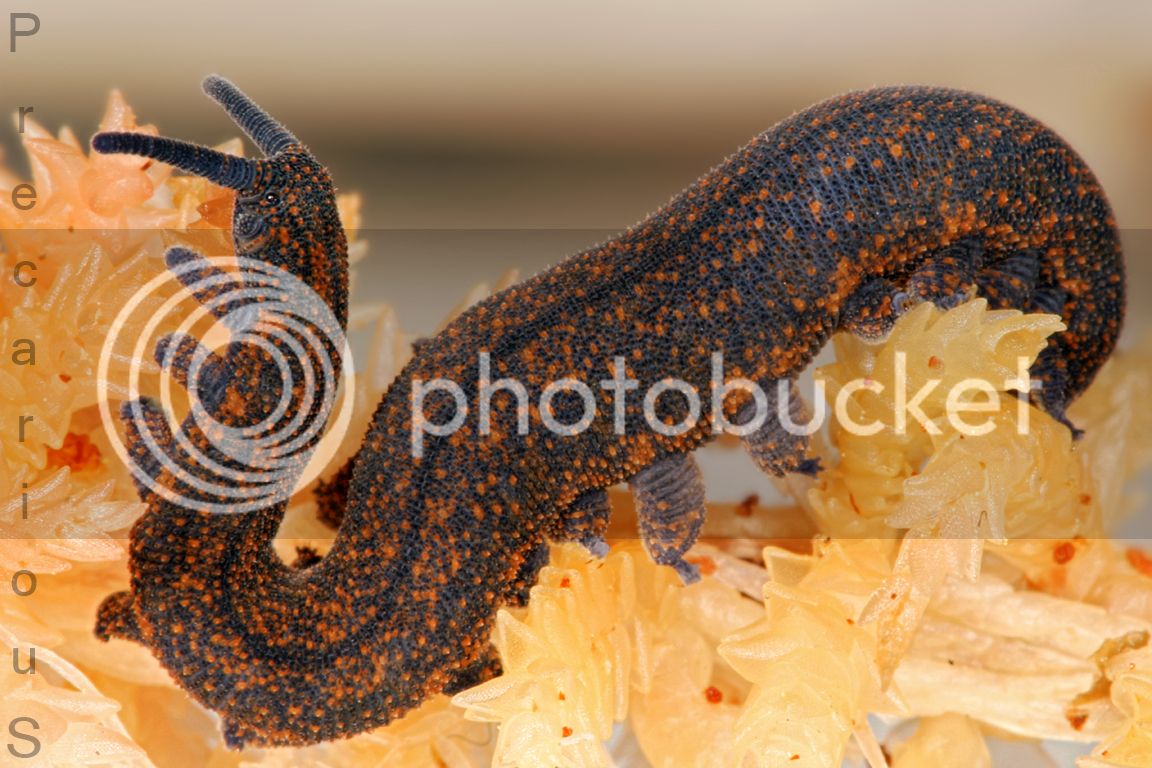
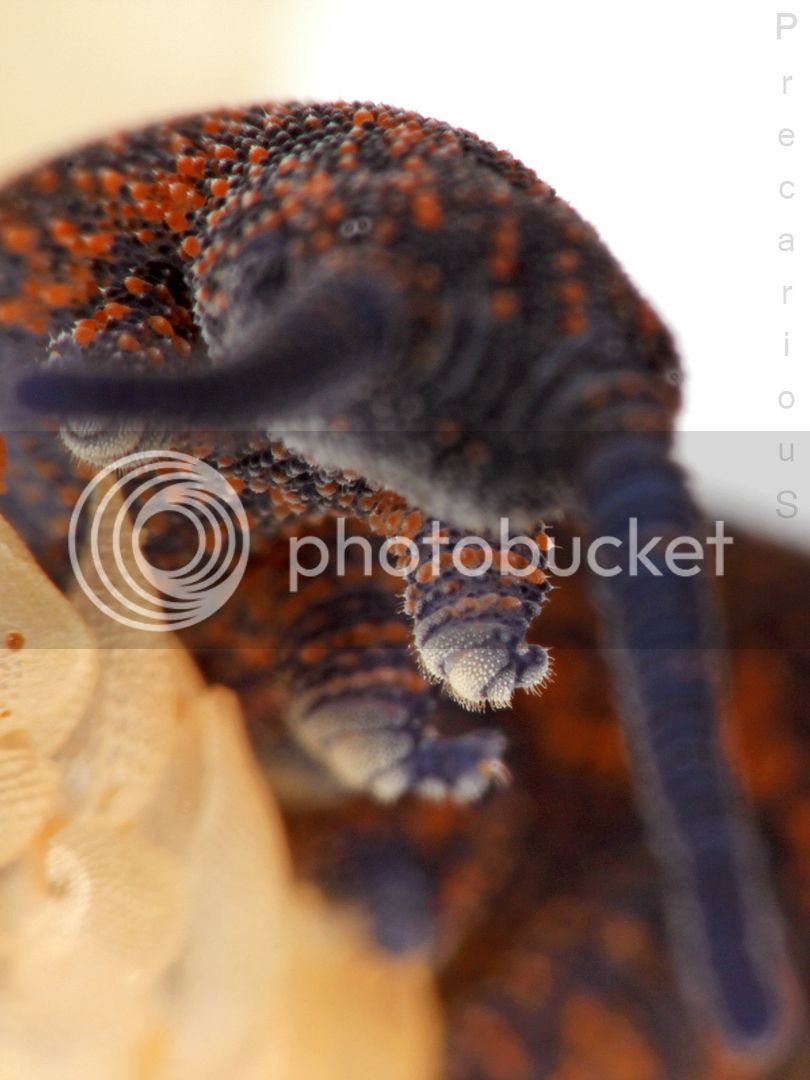
This close-up of the bottom of a pair of peripatus legs shows the spiny pads which they use for walking. The clawed feet are used only when they need extra grip.
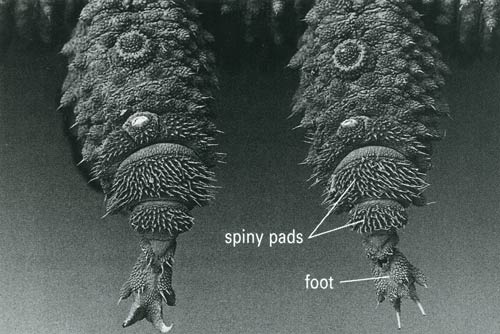
Locomotion is essentially annelid-like, with the body cavity functioning as a hydrostatic skeleton. The parapodia-like legs are also filled with blood and a valve at the base keeps them firm and muscular coordination can extend them or retract them and make them move forward or make them move backward.
Each of the legs bears a pair of chitinous claws for gripping, although on smooth substrate they walk on walking pads.
...
Peripatus have a highly sensitive body to locate prey. Their skin is covered in tiny bumps, many of which have fine, sensory bristles. Their antennae have chemically responsive tips, which detect whether something is likely to be food. Glands (blue) produce slime, which is shot out of the head to trap prey. Their gut (green) can digest liquids and solids. A tubular heart (purple) extends almost the entire length of the body.
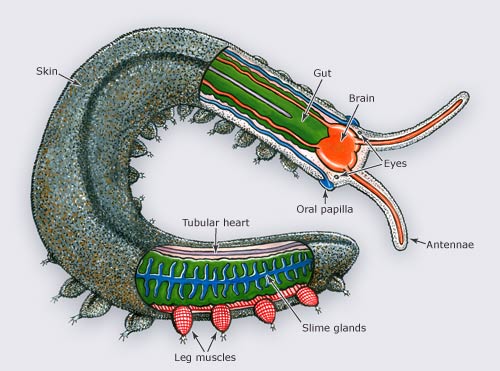
http://www.teara.govt.nz/en/peripatus
http://www.peripatus...nychophora.html
Peripatoides novaezelandiae
Unchanged for 570 million years, Peripatus share traits with annelids (segmented worms) and arthropods (insects, crustaceans, arachnids) yet appear much like a caterpillar. Eggs hatch inside the female and she then gives birth to the live young. Peripatoides novaezelandiae have 15 pairs of legs and grow up to 80mm (3.15").
From Wikipedia:
Peripatus feeds by trapping its prey (mostly small insects) in a white, sticky fluid it ejects from two antennae near its head. The fluid hardens on contact with the air immoblizing the prey. Peripatus then chews a hole in its prey's exoskeleton with its mandibles (which move independently of each other), injects digestive enzymes, and begins sucking out its prey's pre-digested innards.




Here you can see the simple eye located at the base of the antennae with the spout that shoots slime just behind.

You can see the claws that come into use when necessary.


This close-up of the bottom of a pair of peripatus legs shows the spiny pads which they use for walking. The clawed feet are used only when they need extra grip.

Locomotion is essentially annelid-like, with the body cavity functioning as a hydrostatic skeleton. The parapodia-like legs are also filled with blood and a valve at the base keeps them firm and muscular coordination can extend them or retract them and make them move forward or make them move backward.
Each of the legs bears a pair of chitinous claws for gripping, although on smooth substrate they walk on walking pads.
...
Peripatus have a highly sensitive body to locate prey. Their skin is covered in tiny bumps, many of which have fine, sensory bristles. Their antennae have chemically responsive tips, which detect whether something is likely to be food. Glands (blue) produce slime, which is shot out of the head to trap prey. Their gut (green) can digest liquids and solids. A tubular heart (purple) extends almost the entire length of the body.

http://www.teara.govt.nz/en/peripatus
http://www.peripatus...nychophora.html




